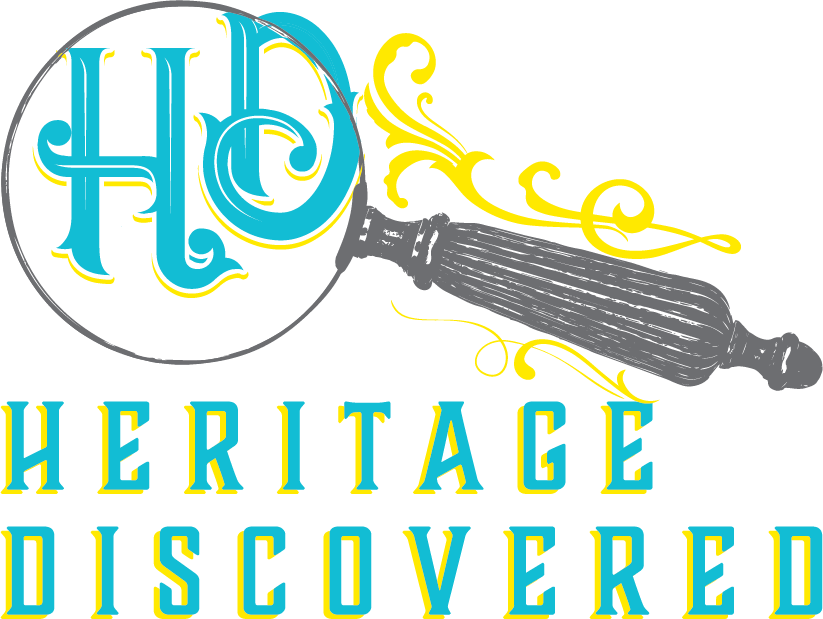How To Solve Your Genealogy Brick Wall With Surname Research
*This post may have affiliate links, which means I may receive commissions if you choose to purchase through links I provide (at no extra cost to you). All opinions remain my own.
At some point when researching your family tree, you’ll hit some genealogy brick walls.
It’s not a matter of if, but when.
These roadblocks can be frustrating and may want to make you give up. It can feel like you’ve already tried everything and you’re never going to figure it out. Believe me, I’ve been there myself.
But if you stay consistent and try out different strategies, it is possible to get past your dead-end ancestor.
In this post, I’m sharing how to use surname research in the area your ancestor lived as a way to bust down a wall.
Be sure to also check out my other posts on genealogy brick wall strategies:
How to use surname research on family history brick walls
One way to get past a research roadblock is by doing a one name study for the geographic area that your family was from.
To do this, you’ll look for every person with the same surname in not only the town, but the county your ancestor lived in, as well as bordering counties.
Since even simple last names could have inconsistent spellings or been poorly transcribed, it is best to also research similar surnames in the region.
This is harder, of course, with more common names but you’ll soon begin piecing together family groups that will help sort out which person belongs to which family.
If you’re researching a more common last name, start by investigating the people with the most unique first names, if any.
I’m currently in the process of doing this with one of my branches that has a somewhat common name – Merrill.
There are a lot of Merrills in the region I’m looking at, but I’m also surveying people with the last names Morrell and Morrill. While these are different last names, I found my ancestor listed as Morrell in one early census, so it’s safer to look at all the similar names than risk missing a relative.
Before you begin the surname study, create a timeline of all the events in your ancestor’s life so you know exactly where to search for which time periods.
Then, identify the available records in those areas and times most likely to name relatives so you can start to establish family groups and figure out who is related to who.
The records will vary with the time period and region, but some ideas of types to look for are:
1) Censuses. For pre-1850 censuses, note the number of males and females in each age range. This will enable you to match up people from other records.
2) Vital records. Besides parents and their birthplaces, record any informants as they may be relatives.
3) Religious records. Who were the witnesses and sponsors at various events for your ancestors?
4) Land records. Were people with the same surname buying or selling land to each other or together?
Did it mention a wife giving up their right to dower?
5) Military records. Pension records are very helpful for discovering the names of wives and children. Sometimes you can find information about siblings, parents, and extended family as well.
6) Probate records. Estate records are a great resource. Probate records often contain the names of spouses, children, and other family members. Pay attention to witnesses and others named in the papers.
7) Newspapers and obituaries. Obituary research especially can tell you about relatives and where people were living.
But don’t forget about local news columns. These can tell you about births, deaths, marriages, and local gossip like someone’s sister who was in town visiting.
Other ideas of records for your surname search include:
1) Court records. Depending on the case, relatives may be mentioned.
2) Tax records. Because censuses are taken only every 10 years, annual tax records are a fantastic way to do a study of surnames in a specific place.
3) Cemeteries. Cemetery research can give you a wealth of information, as relatives are often buried near each other. Look at the graves all around your known ancestor and try to research how those people may be related to them.
If you can’t visit in person, you might get lucky with Find A Grave. Look for people with the same name in the same cemetery and then broaden out the search range.
You can also look for transcribed cemetery records at local libraries and genealogical and historical societies. A bonus of these is that the names are already indexed for you for faster searching.
4) Passenger lists. Finding your family in passenger lists can be like finding a needle in a haystack. But if you do spot them in one, it can tell you a lot about the people who immigrated together and their ages. From there, you can put together a family unit and differentiate between families with people that have the same first names.
Related posts:
How Probate Records Can Help You Find Your Female Ancestors
Can’t Find Your Female Ancestors? You Need To Try Using Religious Records
How To Trace Women In Your Family Tree With Veterans’ Pension Records
How to use the information found in your last name research
After gathering together everything you can uncover on people with the same surname living in the same general area, what’s next?
To piece together family groups and begin to connect them to one another, put the information you discover into something you can visualize.
This can be as simple as using family group sheets or pedigree charts. You can make a spreadsheet or use tables in Word or Google Docs to compare households and begin linking them. You can also make a mind map. Whatever format helps you visualize the details and associate families with each other.
Here’s an example of how I tracked different Merrill heads of household in censuses from one town in Vermont. (There’s actually a lot more in my master document, but this is a snapshot of one town.) Now I’m researching each to find relationships.
Things to look for:
1) Can you trace any separate families back to the same place? Are any families back to the same town or county? Are the heads of household in a census from the same state but now living in another? Are their parents from the same place?
I’ve been looking for the parents of one of my brick wall French-Canadian ancestors whose last name is Sylvestre. Fortunately, it’s not a common name so I’ve been able to look into many people with that surname.
I suspect he came from a small town named St. Cuthbert. It feels like nearly everyone in Quebec named Sylvestre can be traced back to this same small town (and another small town next to it). I’m slowly creating family trees for the different people and connecting the dots, hoping to link to my ancestor.
2) Can you see any migration patterns? Did one household with that surname move to the area and then others follow? While people moved around more than we think in the past, it wasn’t as often as today so there is a possibility they may be related.
For my Merrill branch that I mentioned earlier, I’m looking at Merrills throughout Vermont but am focused on Windsor and Orange counties. Many of the Merrills in these counties trace back to Rockingham County, New Hampshire, where I believe my 4x great grandfather was from. And those Merrills in Rockingham County often trace back to Essex County, Massachusetts.
Through this process, I’ve found the father of my 3x great-grandmother and am now working on identifying her mother. You can read about a case study I’m writing about this brick wall family here and here.
3) Are there naming patterns? For example, with my Irish branches, all the siblings named their kids the same names every generation. It can take some time, but this can help tie people together. Are there any more unique first names that come up that may show connections between households?
Researching everyone with the same last name in a region can be a long process. A lot depends on what records are available where you’re looking and how common a name you’re researching.
But be patient and keep sifting through the people with the same surname. As you link siblings, cousins, parents and children, and in-laws together, you can break your ancestry brick wall!
Related posts:
How And Why To Research Collateral Ancestors
How To Research Your Orphan Ancestors
Why Isn't My Ancestor In Census?
How To Learn More About The Criminal In Your Family Tree
Final thoughts
There are several genealogy brick wall strategies that you can try out to solve your family history puzzle.
Doing surname research for an area is just one of them.
While this strategy can take some time, by learning the family groups in the region and understanding who is related to each other, you can eventually smash down your wall.
Have you ever tried a surname study to break down a brick wall?




